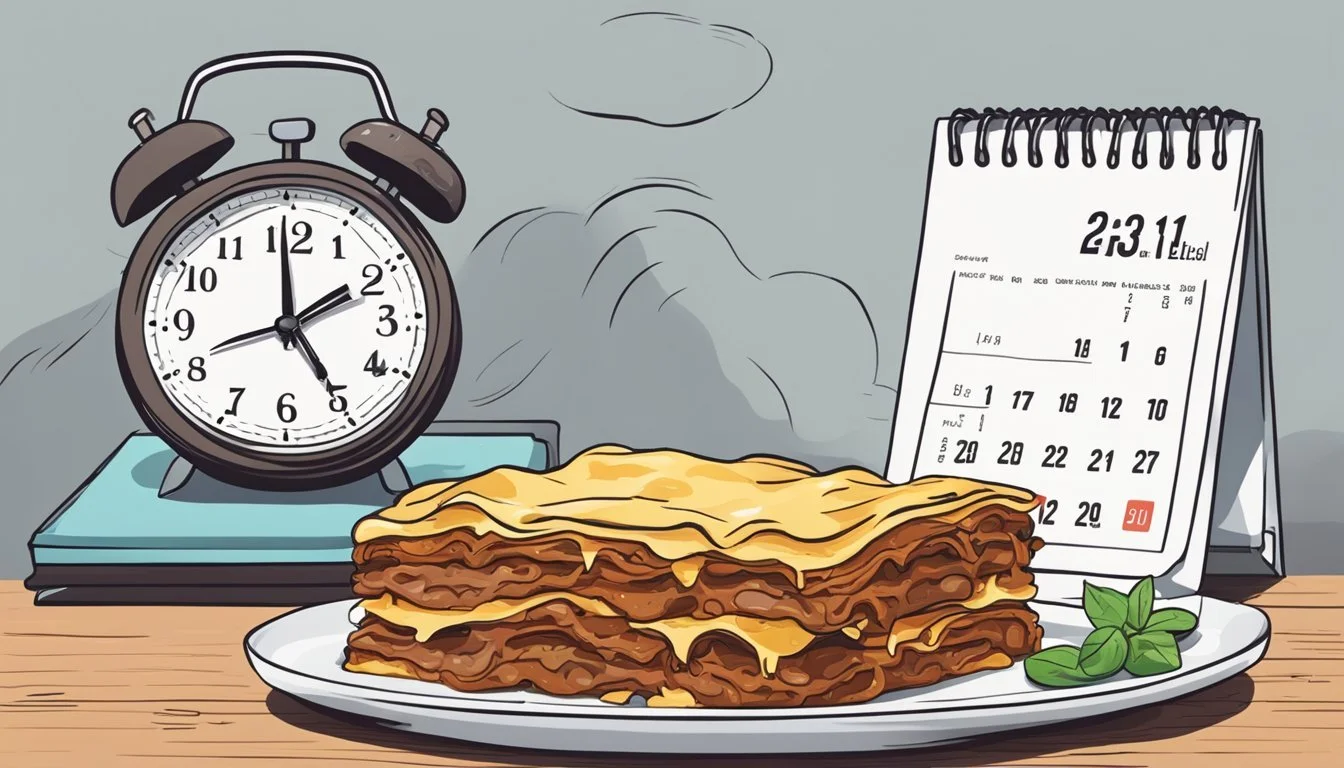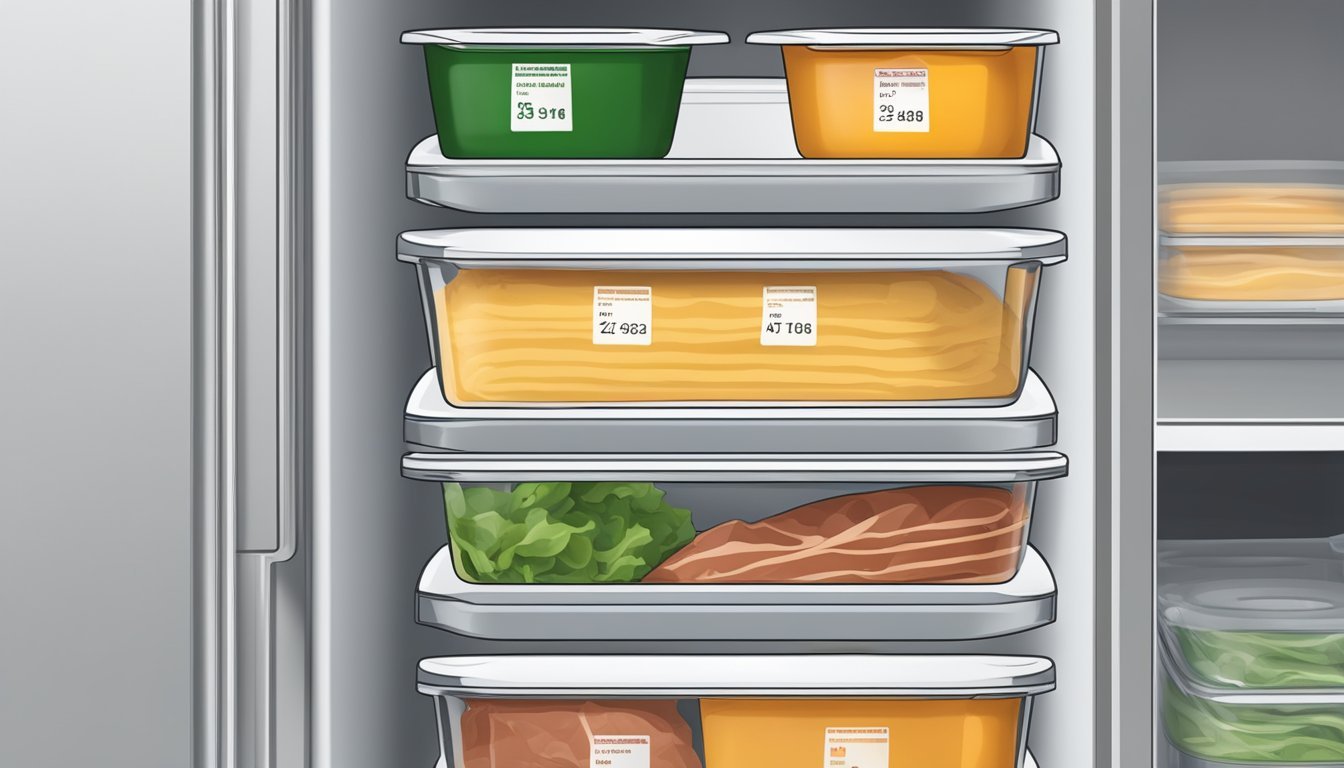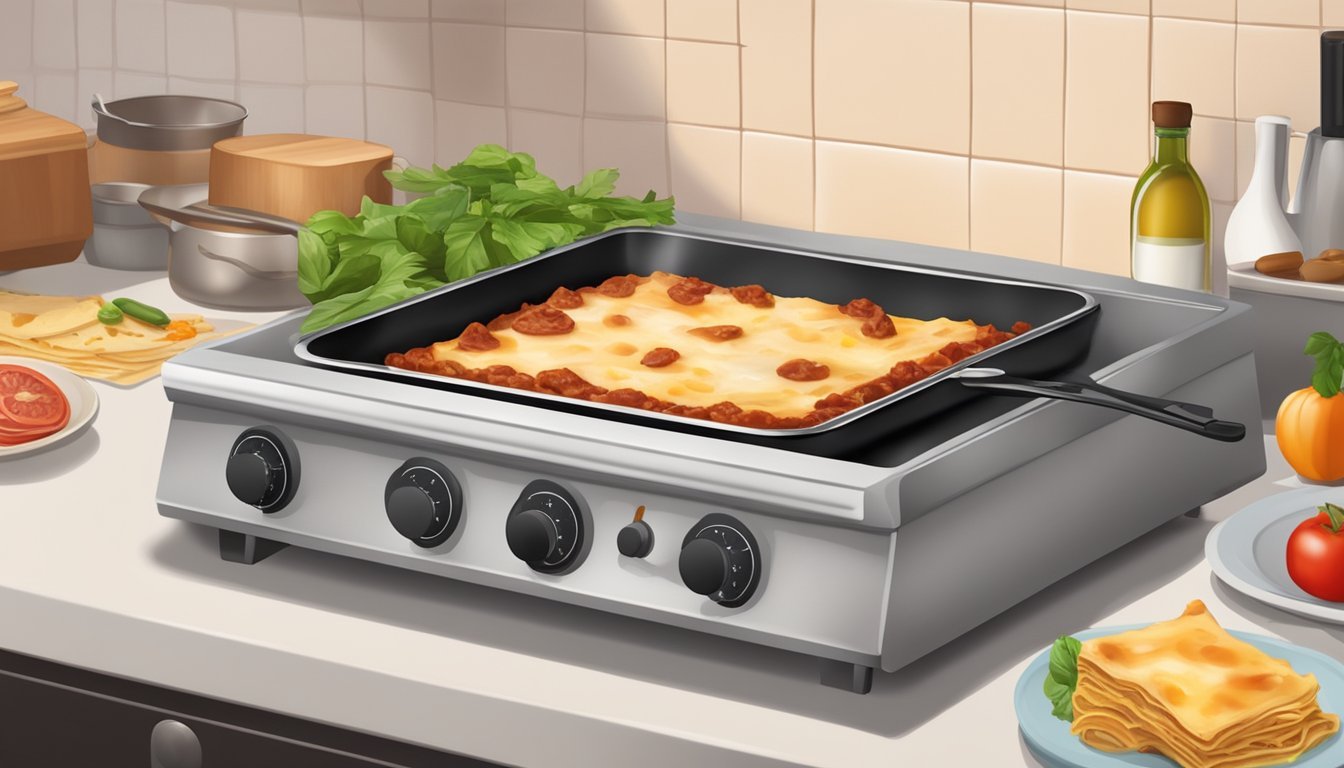How Long Does Beef Lasagna Last?
Storage Tips and Shelf Life
Beef lasagna is a beloved dish that combines layers of pasta, rich tomato sauce, hearty ground beef, and creamy cheese. While it’s a great option for meal prep, knowing how long you can safely keep it in the fridge is essential for maintaining both taste and quality. Properly stored beef lasagna lasts for up to 3-5 days in the refrigerator, ensuring you can enjoy its delicious flavors without worry.
For those looking to extend the shelf life even further, freezing beef lasagna is an excellent option. When stored in airtight containers or well-wrapped, it can last for 6-8 months in the freezer. This method not only preserves the taste but also maintains the dish's overall quality.
To maintain its best quality, it's crucial to follow proper storage guidelines. Allowing the lasagna to cool at room temperature for about 30 minutes before sealing and refrigerating helps preserve its texture and flavor. By adhering to these practices, you can savor beef lasagna over several meals without compromising on its hearty taste.
Understanding Beef Lasagna Shelf Life
Beef lasagna's shelf life varies depending on storage conditions and ingredient quality. Proper handling is essential to maximize freshness and prevent spoilage.
Factors Influencing Shelf Life
Storage Temperature: Refrigeration is crucial. Beef lasagna kept in the fridge typically lasts 3-5 days. For longer storage, freezing is effective, maintaining quality for 2-3 months.
Ingredients: The type and freshness of ingredients like ricotta cheese and vegetables impact shelf life. Fresh ingredients lead to longer-lasting lasagna.
Packaging: Airtight containers minimize exposure to air, slowing bacterial growth. Plastic wrap or freezer bags help in freezing contexts.
Signs of Spoilage
Odor: A sour or off-smell indicates spoilage. Fresh lasagna has a rich, savory aroma.
Texture: A slimy texture suggests bacterial growth. Fresh lasagna should be firm and moist.
Appearance: Check for mold growth, discoloration, or changes in color. Mold is a clear sign of spoilage.
Taste: If the lasagna tastes sour or off, discard it immediately to avoid health risks.
Optimal Storage Practices for Beef Lasagna
Proper storage of beef lasagna ensures that it maintains its quality and safety for future consumption. This guide covers effective methods for refrigerating, freezing, and reheating beef lasagna while preventing issues such as freezer burn and foodborne illnesses.
Refrigeration Methods
After cooking, beef lasagna should cool completely at room temperature. For safe storage in the refrigerator, place the lasagna in airtight containers or cover the baking dish tightly with plastic wrap or aluminum foil. Refrigerated lasagna lasts 3 to 5 days. Keeping it in airtight containers helps retain moisture and prevent the absorption of odors from other foods.
Always mark the date on the container to keep track of its storage time. Leftovers should be refrigerated promptly, ideally within two hours of cooking, to avoid the temperature danger zone where bacteria can thrive.
Freezing Techniques
For long-term storage, beef lasagna can be frozen. Use freezer-safe containers or tightly wrap individual servings in plastic wrap followed by aluminum foil. Homemade lasagna freezes well and can be stored for 2 to 3 months.
To avoid freezer burn, ensure the lasagna is wrapped tightly, removing as much air as possible. This prevents drying out and loss of flavor. Freezing lasagna in individual servings can make thawing and reheating more convenient.
Preventing Freezer Burn
Freezer burn occurs when food is exposed to air, leading to dry spots and loss of quality. To prevent this, use airtight containers or freezer bags designed specifically for freezing. Double-wrap the lasagna, first with plastic wrap and then with aluminum foil.
Ensure that the wrapping is close-fitting and that there’s minimal air inside. Label the freezer bags with the date and contents to manage storage time effectively. Proper packaging techniques help maintain the lasagna's original texture and taste.
Thawing and Reheating Recommendations
Thaw frozen lasagna in the refrigerator overnight to maintain its texture and prevent bacterial growth. It can also be thawed in the microwave using the defrost setting, though this may affect texture.
To reheat, preheat the oven to 350°F (177°C) and bake for 20-30 minutes, or until the lasagna reaches an internal temperature of 165°F to ensure food safety. Alternatively, reheat microwave servings on medium power for 5-7 minutes.
Immediate consumption is recommended after reheating. Reheated lasagna should not be refrozen, and any leftovers should be stored in the refrigerator and consumed within a couple of days to avoid waste and spoilage.
Determining Lasagna Consumption Timeframe
Beef lasagna storage depends on whether it's refrigerated or frozen. Each method impacts the lasagna's freshness and safety for consumption.
Refrigerated Beef Lasagna Lifespan
When stored in the refrigerator, beef lasagna is best consumed within 3-5 days. Proper storage is crucial to maintain its freshness and prevent bacterial growth.
Cooked lasagna should be placed in an airtight container to avoid absorbing odors from other foods. It's essential to cool the lasagna to room temperature within 30 minutes before refrigerating to minimize condensation and moisture build-up, which can foster bacteria.
Monitor for signs of spoilage such as an off smell, discoloration, or unusual texture. Ingredients like ricotta cheese can be particularly susceptible to spoilage, thereby increasing the risk of foodborne illness.
Frozen Beef Lasagna Lifespan
Freezing beef lasagna extends its lifespan significantly. When properly stored, it can last 2-3 months in the freezer. For optimal quality, consume it within the first month.
Wrap the lasagna tightly in plastic wrap and then cover it with aluminum foil to prevent freezer burn. Label the package with the freezing date for easy reference. To thaw, transfer the frozen lasagna to the refrigerator at least 24 hours before reheating. Ensure it reaches an internal temperature of 165°F during reheating to guarantee safety.
Proper freezing maintains the lasagna's texture and flavor, ensuring a delicious meal even after extended storage.
Safety Measures to Avoid Foodborne Illness
To ensure that beef lasagna is safe to consume, it is crucial to follow specific guidelines related to cooking temperatures and food safety practices, which can significantly reduce the risk of foodborne illness from bacteria.
Safe Internal Cooking Temperature
Cooking beef lasagna to a proper internal temperature is key to killing bacteria.
The recommended internal temperature for lasagna, especially when it contains beef, is at least 165°F (74°C). Using a food thermometer, check the temperature at the center and thickest parts of the lasagna.
Lasagna should be cooked thoroughly and evenly.
Failing to reach this temperature can result in bacterial contamination, with pathogens such as E. coli and Salmonella posing significant health risks.
Adhering to a minimum internal temperature keeps the lasagna out of the danger zone (40°F to 140°F), where bacteria multiply quickly.
Refrigeration and Storage Practices
Proper storage practices following cooking are essential.
Refrigerate lasagna within two hours of cooking to prevent bacterial growth. Store leftovers in airtight containers to maintain quality and safety.
Always reheat to 165°F (74°C) before consuming leftovers.
Avoid leaving lasagna at room temperature for extended periods. This practice keeps the dish safe for later consumption and reduces the risk of foodborne illness.
Maximizing Lasagna Quality Over Time
Keeping beef lasagna fresh and flavorful requires careful storage and reheating methods. These steps help preserve the meal's taste, texture, and moisture.
Preserving Texture and Flavor
Maintaining the texture and flavor of lasagna involves strategic storage. Wrap the dish tightly with plastic wrap or aluminum foil to prevent air exposure. This keeps the pasta from drying out and helps retain the rich flavors of the sauce and cheese.
For best results, refrigerate the lasagna within two hours of cooking. The quicker it chills, the better it holds its flavor.
When reheating, opt for the oven over the microwave if possible. An oven set to 350°F (177°C) helps evenly reheat without compromising the lasagna's texture. Covering it with foil during this process prevents the top layer from becoming too crispy.
Preventing Moisture Loss
Loss of moisture can affect both the taste and texture. Placing a small amount of water in the dish before reheating in the oven can prevent dryness.
To store properly, let the lasagna cool to room temperature before refrigerating. This avoids condensation which can make the dish soggy.
For those who like extra cheese or additional vegetables in their lasagna, ensure these ingredients are well-mixed with the sauce. This integration helps lock in moisture and flavor.
Finally, minimize reheating times. Prolonged exposure to heat can dry out the lasagna. Reheat only what is needed to keep the remainder as fresh as possible.







